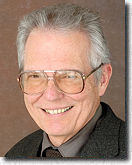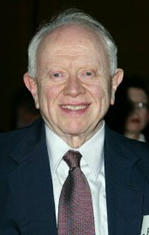
I turned 50 a couple weeks back.
On May 1st to be more precise.
Yes, God’s little joke is that I -- a rabid capitalist -- was born on May Day!
I don’t resent the date, however; I like May 1st. It’s a Spring day, and the desert sky overhead is nearly always bright blue on my birthday. In fact, I can’t remember it ever raining on May 1st, no matter where I lived at the time. Though I’m sure it was raining somewhere else in the world, the sky over my head was clear -- at least in my memory, if not reality.
Hitting the half-century mark, however, naturally tends to put a person’s mind through a series of retrospective gymnastics. And, Terence Faherty’s blog post, on Monday, about vintage detective films, reminded me of a surprising event I enjoyed two or three months ago.
The Setup
You remember that Calgon commercial from the 1970’s?
You DON’T!?! Well, that probably just means you’re younger than I am. (Or, that your mind is going. lol)
In the ad, a frazzled woman, driven to near-bursting from the anxiety created by traffic jams, her yelling boss, crying baby and overheated dog, would invoke the magic words:
“Calgon, take me away…!” At which point, she’d be transported to a bubble bath in what resembled a mountain-top Greek temple, and transformed from a burnt-out working mom to a completely relaxed woman of luxurious leisure … all by using Calgon products in her bath.

A nice trick.
I’ve never used Calgon, myself (Certainly, this surprises you.), but a few things that do have this “Calgon Effect” on me are barbequing (beer and cigar being as important as charcoal and lighter fluid, here), or watching either
The Big Sleep (Bogart-Bacall version) or
Casablanca. For some reason, each of these films, or meat burning over coals, seems to exude an essence that calms and refreshes me.
When I really need to let my hair down, I burn a steak on the grill, then swill the charred-rare meat with a couple beers while wallowing in one film after the other, sometimes decanting a little Fonseca Tawny Porto during my “visit” to Rick’s
Café Americain. (Blowing cigar smoke into a glass of port does something to the port that’s worth experiencing, in my opinion -- even if I can’t explain just what that “something” is.)
The McGuffin
The event I mentioned earlier -- the one Terence Faherty’s blog post reminded me of -- occurred while my dad was undergoing radiation treatment for his cancer, so I was in hectic “jump here, jump there, jump over to that place” mode, trying to balance the needs of different family members. My dad needed oversight as his energy levels dwindled and finally all but fizzled-out; my daughter needed me to explain Geometry to her, so she could pass a required class for graduation in mid-May; and my youngest son needed constant monitoring, simply because he’s a wild man. Which means, my sleeping hours got hacked away while my body and my gray cells took a pretty serious beating.
I needed a break, so when I finally got the chance I snagged
The Big Sleep DVD off the shelf at our local library.
As I mentioned earlier, I was a bit addle-brained at the time. Consequently -- though I spotted something odd about the film, fairly early on – it took me a while to figure out what I was actually looking at.

And, frankly, I wasn’t
sure what I was looking at, until I saw the scene in which Lauren Bacall, playing Vivian Rutledge, wears that veil when visiting Bogart’s character, Marlowe, in his office. You can see a shot of that scene on the left. If you don’t recognize it, that’s probably because you’ve only watched the version of the movie that was released in August of 1946.
An earlier version, called a “pre-release” was supposedly sent out to be screened by soldiers and sailors in the Pacific fairly early in 1945. But, Warner Brothers didn’t release the film to state-side theaters at the time, because certain concerns had been voiced.
For one thing, Warner had a back log of WWII films they wanted to trot out before they became passé to the movie-going public, now that the war was winding down. So, they decided to keep The
Big Sleep in the big tin can for awhile, to give those other films a chance to make money while they could.
Additionally, Lauren Bacall’s agent, Charles Feldman, was concerned, because Bacall had received some negative reviews for her role in the recently released
Confidential Agent. Feldman was bent on ensuring that
The Big Sleep would present Bacall in a way that would highlight her talents and help cement his client’s reputation as a rising star. However, several things about the movie worried him, including that veil Baccal wore in the pic I posted above, left.
So, while the film was waiting to be released, Warner Brothers rounded up most of the talent and re-shot what would wind up being about twenty minutes worth of the final movie. The film was re-edited, and the revised version -- the one most of us know and love -- was released to theaters on August 23rd of 1946.
The Switch
This August 23rd, 1946 release was the one I thought I’d borrowed from my local library. In fact, I’d borrowed it from the library several times before, and knew that they had two copies in stock. One copy held the film, plus a copy of an original theater trailer advertising it, as well as a version of the film that had somebody’s comments imposed over the soundtrack.
The other copy held the film, the trailer, the comment version, and a documentary about the original version of
The Big Sleep -- that 1945 “pre-release” supposedly shown only for a short period of time, to soldiers and sailors in the Pacific, which most people had never seen. This fascinating documentary had clips of the pre-release version, which it stated was being restored for potential release. It was here that I initially saw Bacall wearing that tell-tale veil.
And, when I saw it again, I finally knew what I was watching.
The Office
As previously mentioned, Bacall’s agent, Charles Feldman, didn’t like the veil his client wore in the office scene with Bogart. He felt it hid her beauty, while also distancing her character from Bogart’s. Both he and the studio wanted to capitalize on the on-screen chemistry between Bogart and Bacall, which movie-goers had claimed to clearly feel while watching the pair in
To Have and Have Not. These weren’t stupid guys; they knew that the promise of more fireworks like that would draw movie-goers in droves. So, they literally got the intervening veil out of the way on the re-shoot, and parked a saucy beret on Bacall’s head (pic on right).
They also cut, re-wrote and re-shot to draw Bogart and Bacall into closer on-screen proximity, in order to splash those fireworks as high and wide as the censors would permit. Lines were added, including sexually suggestive banter about a racehorse. And, I think (though I can’t be sure) this is how my favorite line in all of movie lore was born.
After the bereted Bacall hops up on Bogart’s desk, she rubs the fabric of her skirt just above the knee, and Bogart’s character says, “Go ahead and scratch.”
 |
| "Go ahead and scratch." |
I love that line. Scratching an itch: an activity not often mentioned in film or print because it’s so common. A suggestion that seems innocent on its surface, but which prompts Bacall’s character to hitch up her skirt, revealing some of her long legs in good light, so she can scratch. The jerking down of her hem line again, almost immediately, as if to tell Bogart’s Marlowe, “I know what I’ve got; I’m not afraid to flaunt it; but, you’re not getting close to it unless you play this game my way.”
A common act. Perhaps a common line. An explosion of unspoken sexual innuendo and tension.
Plus -- it’s funny: A man telling a woman to “Go ahead and scratch.” The laugh that bubbles up when it’s heard, but that can’t quite get out before the actual scratch, breaks tension at the crucial moment, serving to super-charge the ensuing sexual tension of the next moment to an otherwise improbable height.
And, a woman of the 40’s exerts her own power, to influence a business concern and possibly protect her family. We of the 21st Century may not like what she has to do, in order to level the playing field against that male PI, but we can understand that in 1945 and ’46 many women lacked even this opportunity to avoid having their concerns dismissed with a simple pat on the head. Bacall’s character, in this scene, is playing hardball. That’s a fact we can’t ignore.
Four simple words. A seemingly mundane line of dialogue. TRULY great writing.
Powerful stage business that caries the scene through future decades.
Well, I’ve run on long enough for one post. However, I’ll be back in two weeks with some additional differences between the films, which I found valuable in a writing sense.
See you in two weeks!
--Dixon













.gif)
























